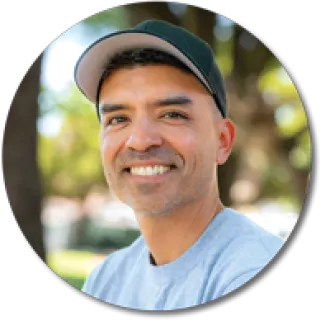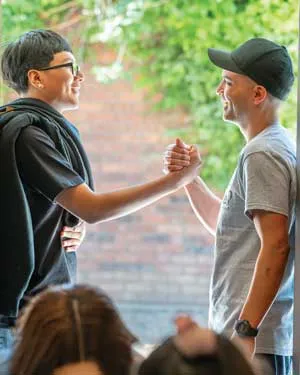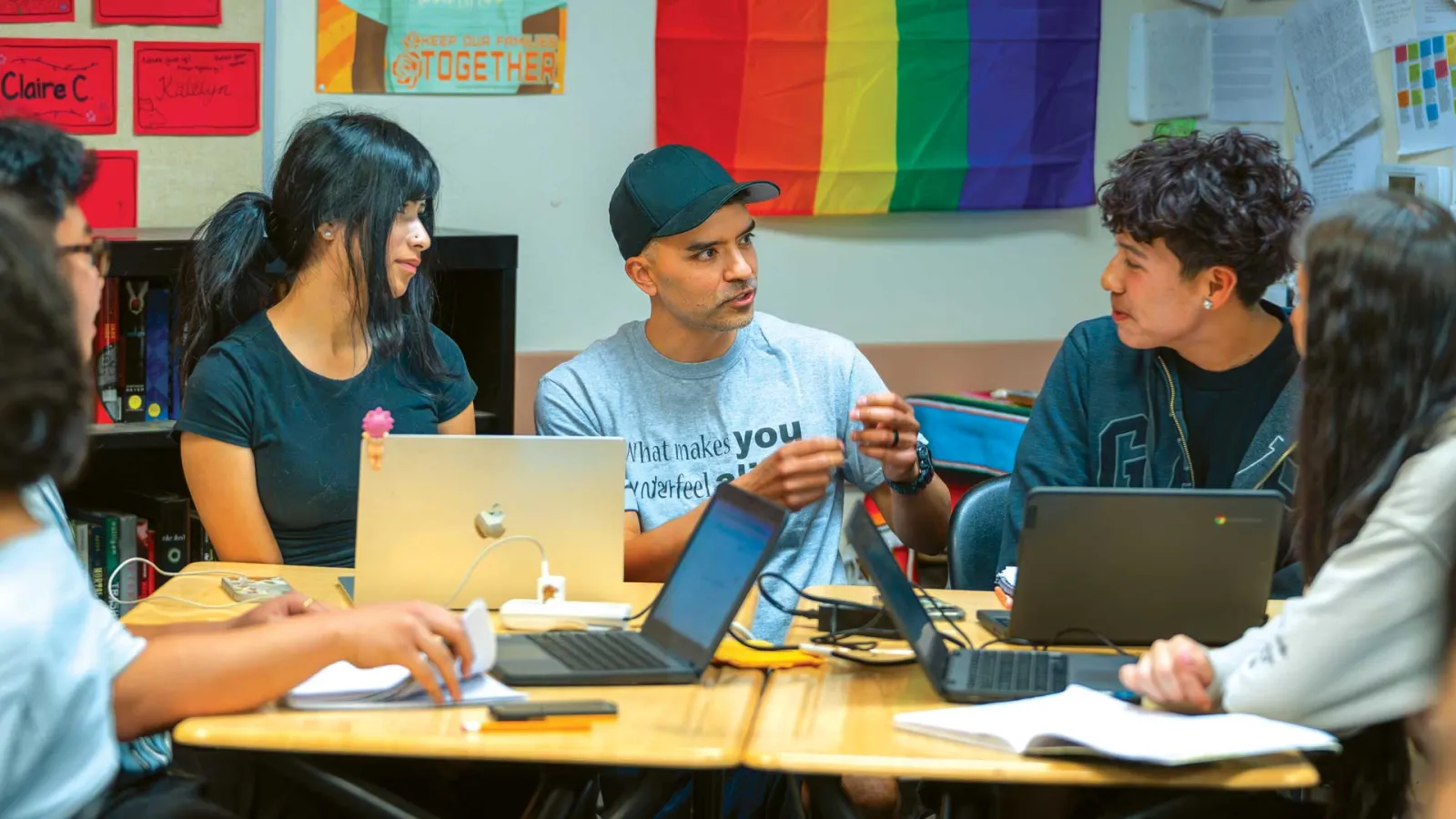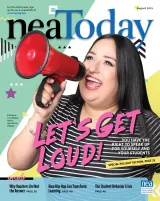Drawing from his experience as a nonviolence trainer and educator at Yerba Buena High School, in San Jose, Calif., Tinoco works to disrupt violence and help schools replace punishment with empathy, connection, and care. He offers a vision of education grounded in love, justice, and community.
What is nonviolence pedagogy?
Nonviolence pedagogy, explains Tinoco, isn’t only about resolving conflict or adding a mindfulness practice to the school day. It’s about transforming the way educators show up in schools.
“Nonviolence is a spiritual, emotional, intellectual, and physical way of being,” Tinoco says. “It is not a program, nor can it be reduced to quick fixes.”
That mindset touches every part of his work—from how he responds to student behavior, approaches lesson planning, orients himself to time, takes care of himself, and practices interdependent care.
Quote byMike Tinoco

For example, rather than trying to control students, he makes requests of them, holding care for their needs as well as his own. His lessons treat students’ lives as primary text, inviting healing and community building through storytelling. He also prac?tices collective care by co-creating professional development with col?leagues that centers on dialogue, empathy, and praxis.
In Tinoco’s view, love, hope, and community are essential threads in the fabric of a humanizing and liberatory education.
And while Tinoco’s approach might sound lofty, he is deeply practical. He encourages educators to create regular opportunities for students to share their stories and reflect on their experiences.
“Joy is our birthright,” he says. “Students deserve to see how the content they are learning can be infused into who they are and want to become.”
He also invites educators to consider the different needs (emotional, social, and intellectual) behind students’ and teachers’ behaviors. “By taking a pause, breathing, and connecting with the feelings and needs alive in ourselves, we model how to retain our power as humans,” Tinoco says.
Voluntary suffering, explained
Tinoco speaks openly about the emotional toll of teaching—such as addressing injustice in the world while attending to the demands of teaching—and connects the concept of “voluntary suffering” to educators. This idea of voluntary suffering stems from civil rights leaders like Bernard LaFayette Jr. and John Lewis, who didn’t choose the systemic violence they faced, but they did choose to put their bodies on the line in the name of justice.

That choice gave them power, explains Tinoco, who sees parallels in education today.
“There are teachers who are putting their jobs on the line to teach the raw truth of history,” he says. “Doing so meets needs for integrity, purpose, and supporting students’ understanding of the world.”
But he’s also clear: This is not a call to burn out for the cause of a liberatory education.
“We must make sure that we are not suffering to the point of agony,” he shares. “We must ensure that we are caring for ourselves and each other.”
For Tinoco, self-care and collective care aren’t buzzwords—they are survival strategies. In a world where teachers are stretched thin and constantly asked to do more with less, slowing down becomes a radical act, he says. He suggests mindful walking before school, during your break, or after school—aligning slow steps with slow breaths and being fully attuned to the present moment. But slowness is also an important practice in one’s pedagogy, as it disrupts the frenetic pacing of school that tends to cause immense stress for students and teachers alike.
“It’s harmful,” he notes. “We need to normalize moving at a pace more aligned to the breath.”
So where should educators start?
Tinoco says the answer is simple: Return to the vision.
“Think about the kind of classroom you dream of. Let that vision guide you,” he suggests. “When we hold firmly to our vision and care for our needs, we can remain creative, hopeful, and connected to the heart.”
Who is Mike Tinoco?
When Mike Tinoco was young, he had a hard time trying to make sense of the world. Beatboxing—an art form he discovered in high school—was the first thing that made him feel capable and smart. It was in those hours of self-taught practice, trying out beats on the bus and in the school library, that Tinoco began to rebuild something essential: His belief in himself.
“I had never received applause for anything as best as I could remember. … It was exhilarating and life-altering,” he writes in his book, Heart at the Center: An Educator’s Guide to Sustaining Love, Hope, and Community Through Nonviolence Pedagogy. That spark of joy, self-worth, and being truly seen became the foundation for everything that followed.
His journey from a wounded and lost young person to an educator grounded in healing and nonviolence isn’t just personal—it’s a blueprint for how learning can transform lives when the heart is at the center.
Learn more about Mike Tinoco’s work.

We Want to Hear from You
Get more from



